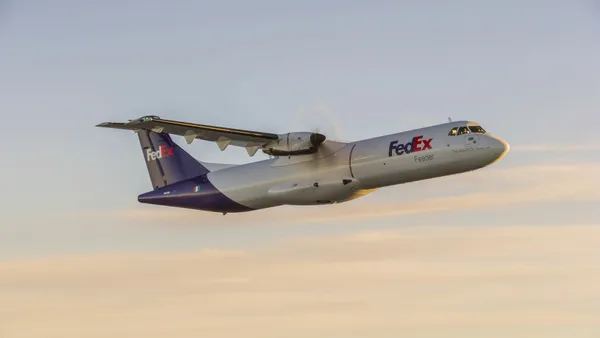Dive Brief:
- Victoria’s Secret has been moving shipments away from air in favor of ocean transport as freight rates stabilize, Chief Finance and Administrative Officer Tim Johnson said on a Dec. 1 earnings call.
- The retailer expects the modal shift to help abate burgeoning costs. The company had seen supply chain costs rise by roughly $300 million last holiday season due in part to a reliance on air freight. Now, the company expects closer to $100 million in incremental supply chain costs from fall 2022 to spring 2023.
- “As we move into 2022 and [the] supply chain started to get incrementally better from a flow perspective, it gave us the confidence that we could start taking merchandise off of airplanes and start putting it on boats,” Johnson told analysts.
Dive Insight:
During Q3 last year, Victoria’s Secret was nearly entirely dependent on transporting merchandise via airfreight, especially during the holiday season. At the time, the company had ordered 200 million units of stock for the fall season, 45% of which were delayed between 2 to 9 weeks, CEO Martin Waters told investors during a Q3 2021 earnings call.
“In some cases, we won’t get the merchandise at all. So, all of our plans are being reworked, [and] 90% of our merchandise will come in by air,” Waters said during the call. “In addition to that we have 100 vessels at anchor right now that are not coming to shore.”
At the time, rising ocean and air rates as well as higher raw materials prices led the retailer to forecast higher supply chain YoY expenses, the CFO shared.
Since then, ocean and air rates have normalized compared to last year’s high cost environment. Transpacific spot rates in November were down 32% YoY for air cargo, and 79% YoY for ocean shipments, according to Xeneta's Clive Data Services.
Now, Victoria’s Secret joins the list of retailers optimistic about margins as freight costs continue to soften going into 2023. Gap also saw improved margins in Q3 as air freight rates normalized YoY spending levels.
“When we think about the margin … we do expect to have some tailwind as we go into spring season, particularly around freight rates and freight opportunity year over year,” Johnson told analysts.















